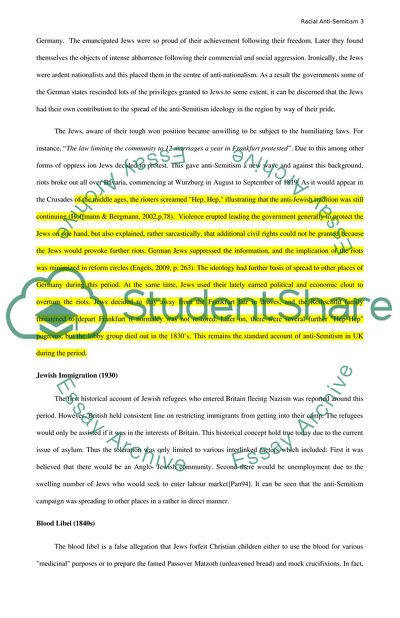Cite this document
(Extent of Anti-Semitic Ideology in Europe 1815-1945 Coursework Example | Topics and Well Written Essays - 3500 words - 1, n.d.)
Extent of Anti-Semitic Ideology in Europe 1815-1945 Coursework Example | Topics and Well Written Essays - 3500 words - 1. https://studentshare.org/history/1871382-to-what-extent-did-anti-semitic-ideology-become-a-part-of-european-culture-expressed-throughout-the-years-1815-1945
Extent of Anti-Semitic Ideology in Europe 1815-1945 Coursework Example | Topics and Well Written Essays - 3500 words - 1. https://studentshare.org/history/1871382-to-what-extent-did-anti-semitic-ideology-become-a-part-of-european-culture-expressed-throughout-the-years-1815-1945
(Extent of Anti-Semitic Ideology in Europe 1815-1945 Coursework Example | Topics and Well Written Essays - 3500 Words - 1)
Extent of Anti-Semitic Ideology in Europe 1815-1945 Coursework Example | Topics and Well Written Essays - 3500 Words - 1. https://studentshare.org/history/1871382-to-what-extent-did-anti-semitic-ideology-become-a-part-of-european-culture-expressed-throughout-the-years-1815-1945.
Extent of Anti-Semitic Ideology in Europe 1815-1945 Coursework Example | Topics and Well Written Essays - 3500 Words - 1. https://studentshare.org/history/1871382-to-what-extent-did-anti-semitic-ideology-become-a-part-of-european-culture-expressed-throughout-the-years-1815-1945.
“Extent of Anti-Semitic Ideology in Europe 1815-1945 Coursework Example | Topics and Well Written Essays - 3500 Words - 1”. https://studentshare.org/history/1871382-to-what-extent-did-anti-semitic-ideology-become-a-part-of-european-culture-expressed-throughout-the-years-1815-1945.


